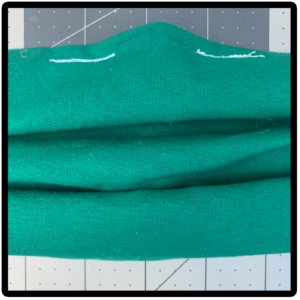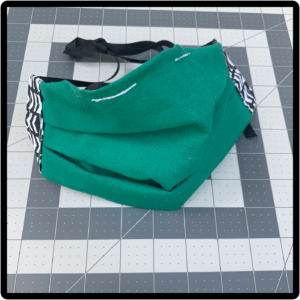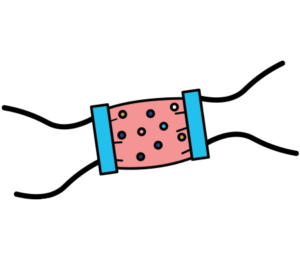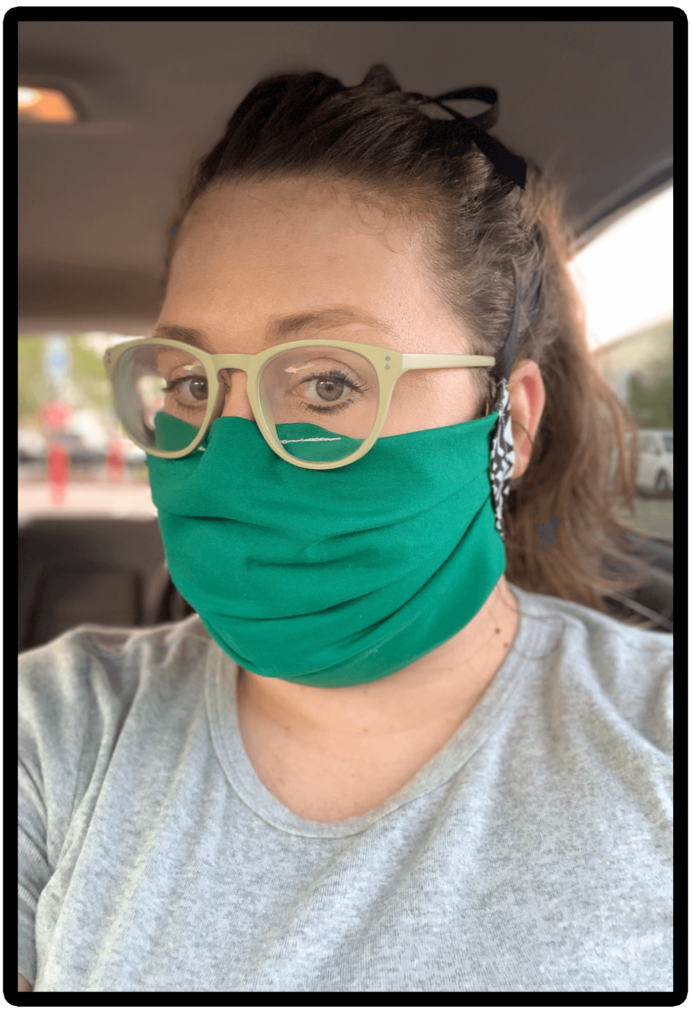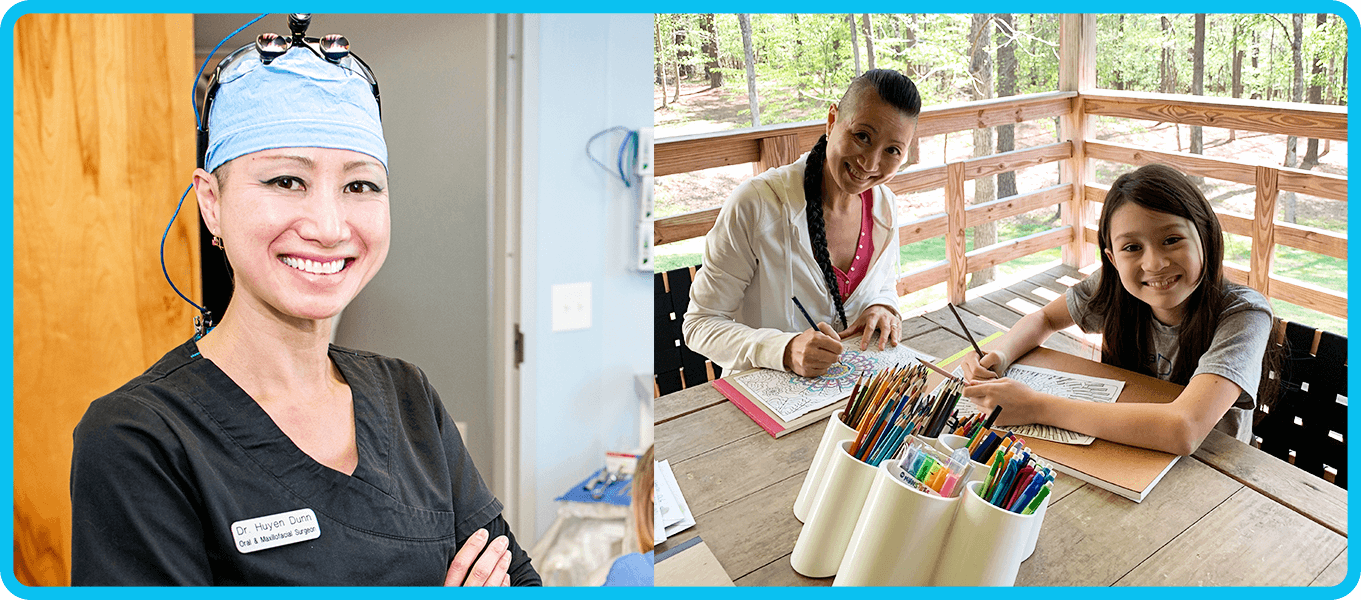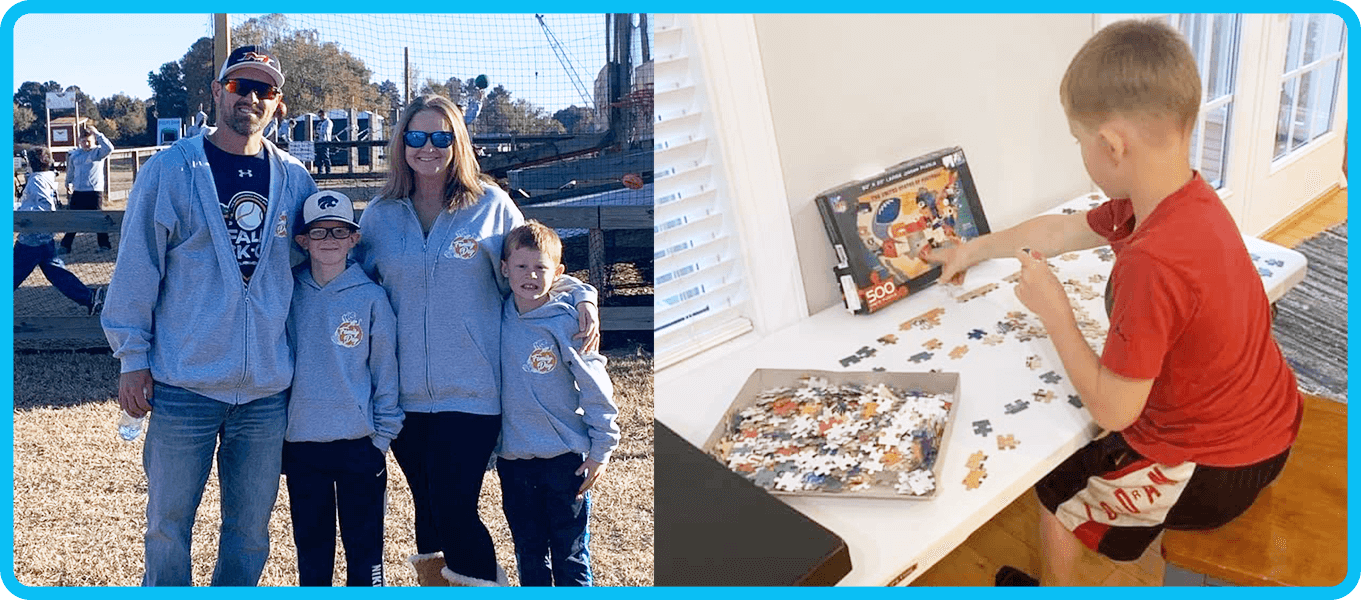September is Dental Infection Control Awareness Month (DICAM) and Lane & Associates is excited to share our commitment to ensuring safety at our offices!
The Organization for Safety, Asepsis, and Prevention (OSAP) is encouraging all dental organizations and dental staff to participate in this campaign with the goal of raising awareness, sharing infection control best practices, and joining the conversation on social media.
Our offices will be participating throughout the week in the daily OSAP Challenge on social media which has a specific theme for each day of this week!
INFECTION CONTROL DAILY THEMES:
- Tuesday: Hand Hygiene Infection Control
- Wednesday: Dental Unit Waterline Infection Control
- Thursday: Personal Protective Equipment (PPE) Infection Control
- Friday: Dental Instrument Sterilization Infection Control
What is Dental Infection Control?
Infection Control within the Dental Office is extremely important to ensure a clean environment for patients and staff. Due to the close interactions between patients, dental equipment, and dental employees in a dental office, having infection control systems in place and best practices is vital.
Gloves, masks, eyewear, and protective apparel help protect you and the dental team from exposure to potentially harmful microorganisms including COVID-19. It’s up to us to make sure we Break the Chain of infection so that every dental visit is a safe dental visit. Let’s review some best practices we implement in our dental offices.
1. Hand Hygiene
- Hand hygiene (e.g., handwashing or hand antisepsis) substantially reduces potential pathogens on the hands and is considered the single most critical measure for reducing the risk of transmitting organisms to patients and healthcare staff.
- Washing our hands first before donning gloves means we’ve removed germs before putting our gloves on. That means that if the gloves get damaged, those germs will not transfer.
- For routine dental examinations and nonsurgical procedures, handwashing and hand antisepsis is achieved by using either a plain or antimicrobial soap and water.
2. Dental Unit Waterline Treatment
- Dental unit waterlines are the long, narrow tubes that run to the dental chair (unit). These waterlines carry water from the public water supply to the dental equipment we use to treat and clean your teeth.
- We treat our dental unit waterlines on an ongoing basis with products specially designed to eliminate any germs. We also test the water regularly as recommended by the CDC, to make sure that everything is working properly.
3. Personal Protective Equipment
- All staff are trained on what type of PPE should be used and how to properly don and doff (i.e. put on and take off) their PPE. They are also trained on the limitations of PPE, proper care & maintenance of PPE, and proper disposal of PPE.
- Patients are also given PPE during dental procedures such as sterile dental napkins & should be wearing their own masks when moving throughout the dental office during this time.
4. Dental Instrument Sterilization
- All instruments are sterilized by cleaning them first, that’s because if there were any debris stuck to the instruments it would not be possible to properly sterilize them. After that, we place them in special closed pouches or wrap them. Then we place these in a UV sterilizer that kills every germ present on the instruments. The end result is clean and sterile instruments for each of our patients.
- We test these sterilizers by following the CDC recommendations on using a special test kit containing spores—these are hardier than normal bacteria and germs. Using this test, we can check that the sterilizer is doing what it is supposed to do. If the hardy spores in the test kit are killed in the sterilizer then we know it is working to kill all of the germs, including COVID.
We hope this information is helpful to our patients and other dentists throughout the state. If you would like to learn more please visit the OSAP website here.
PATIENT CONTEST
We want to challenge our patients to follow our lead during DICAM month and want to give away some fun prizes to those that participate! Starting on Monday, September 28th we want to see your #LAADICAM20 posts! These can range from photos of your kids properly wearing their own PPE (their masks) to creating your own dental office at your house to videos of a fun dance while washing your hands!
Our Patient contest will run from Monday, September 28th at 8AM to Wednesday, September 30th at 12AM. We will pick Three Winners to receive Automatic Toothbrush Prize Sets (including Quip, Oral B, or Burst)!
Rules: Must be an LAA patient to participate. Must post your photo or video to your social media page and use #LAADICAM20 to be eligible for entry. We will contact the winner via social media. Good luck to all participants!
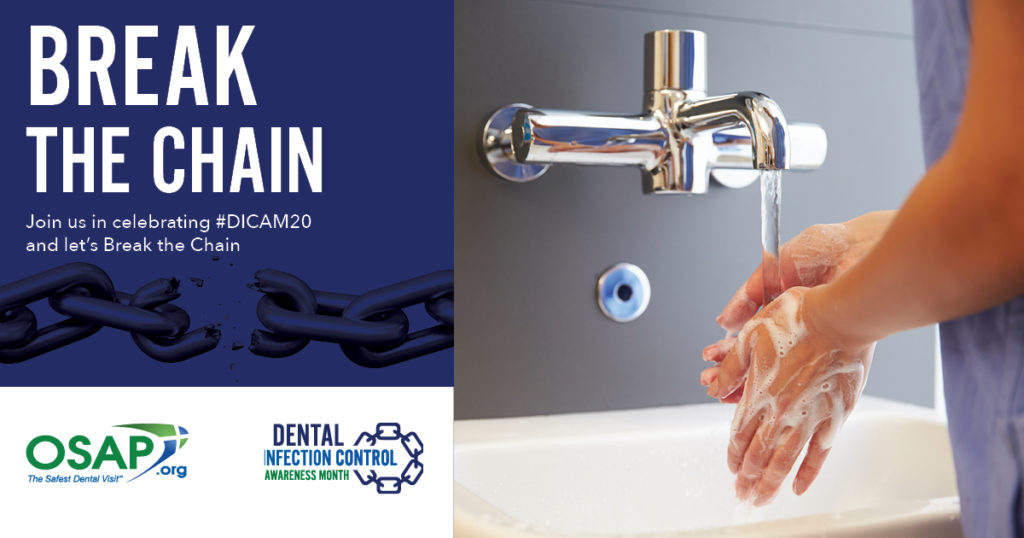
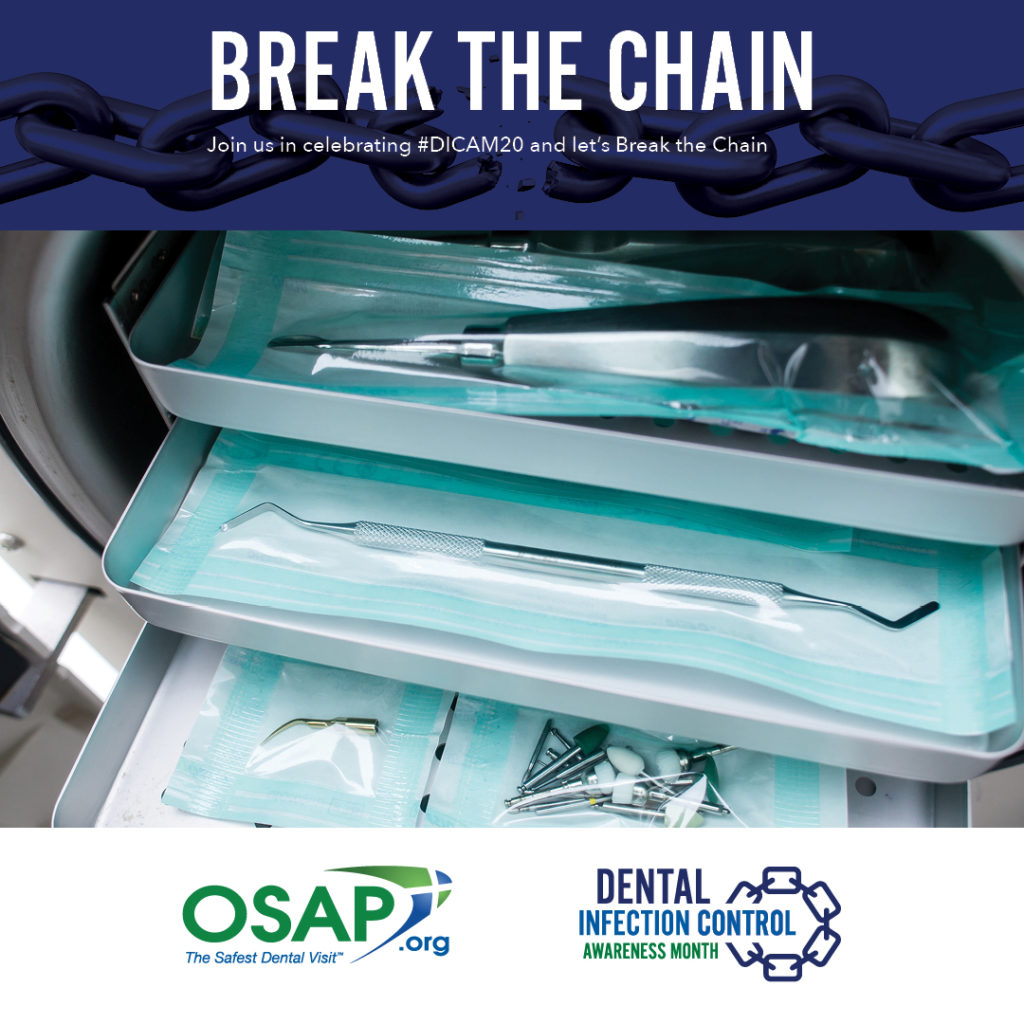
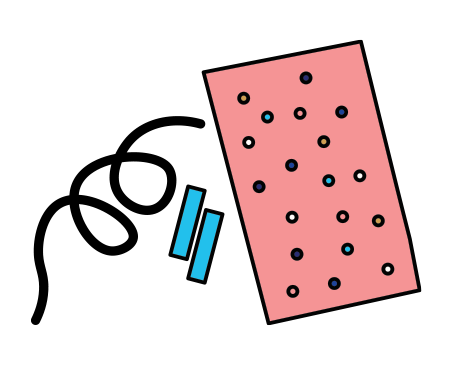


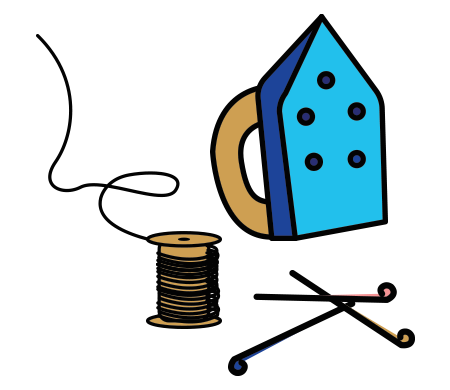

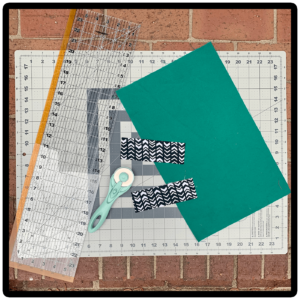
 Take your 100% Cotton fabric and cut (1) rectangle that is 10 inches wide and 16 inches long. Then cut (2) pieces of fabric into 2×6 inch strips.
Take your 100% Cotton fabric and cut (1) rectangle that is 10 inches wide and 16 inches long. Then cut (2) pieces of fabric into 2×6 inch strips.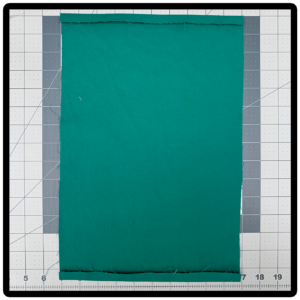
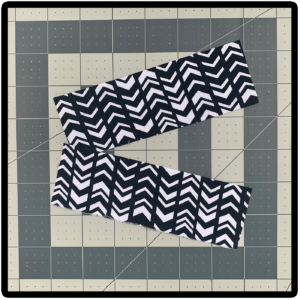
 With the front side of the fabric facing down (wrong side up), fold over 1/2 inch on the top and bottom (10-inch sides). Press and stitch across both folds.
With the front side of the fabric facing down (wrong side up), fold over 1/2 inch on the top and bottom (10-inch sides). Press and stitch across both folds.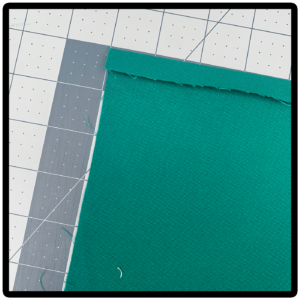

 With the wrong side up, fold the top and bottom edges to meet in the middle and use the iron to press.
With the wrong side up, fold the top and bottom edges to meet in the middle and use the iron to press.

 On each side of the mask, make 3 pleats. Each pleat should be approximately 1 inch in size with the top two pleats folded down from the top and the bottom pleat folded up from the bottom. These should be centered in the mask, leaving 2-3 inches of flat fabric at the top and bottom of the pleats.
On each side of the mask, make 3 pleats. Each pleat should be approximately 1 inch in size with the top two pleats folded down from the top and the bottom pleat folded up from the bottom. These should be centered in the mask, leaving 2-3 inches of flat fabric at the top and bottom of the pleats.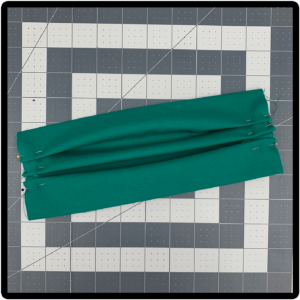
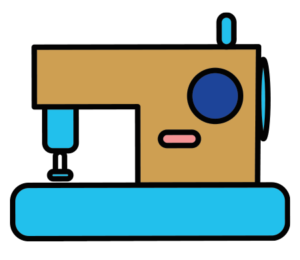
 Sew pleats into place.
Sew pleats into place.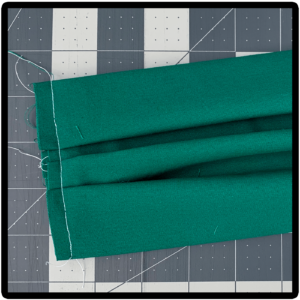

 Fold the lengthwise sides of the 2×6 edging material inwards at the middle and press.
Fold the lengthwise sides of the 2×6 edging material inwards at the middle and press.
 Place the edging material with unfinished sides up and lay the mask front side down. Align the sides to the middle of the edging. Place the ribbon 1/2 inch from the edge corner, pin it into place, and sew across the stitching to hold everything in place.
Place the edging material with unfinished sides up and lay the mask front side down. Align the sides to the middle of the edging. Place the ribbon 1/2 inch from the edge corner, pin it into place, and sew across the stitching to hold everything in place.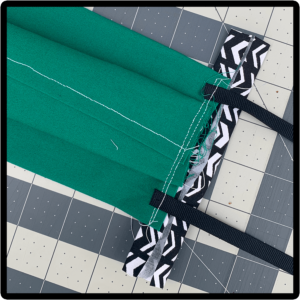

 Fold the top and bottom edging pieces inwards, meeting in the middle. Be sure they cover the raw edges of the mask and ribbon (this may fold the mask inward as well).
Fold the top and bottom edging pieces inwards, meeting in the middle. Be sure they cover the raw edges of the mask and ribbon (this may fold the mask inward as well).

 Stitch both sides of the edging closed.
Stitch both sides of the edging closed.
 Sew (2) 1-inch stitches, approximately 1/4 inch across the top of the mask, so a pipe cleaner can be inserted if desired.
Sew (2) 1-inch stitches, approximately 1/4 inch across the top of the mask, so a pipe cleaner can be inserted if desired.